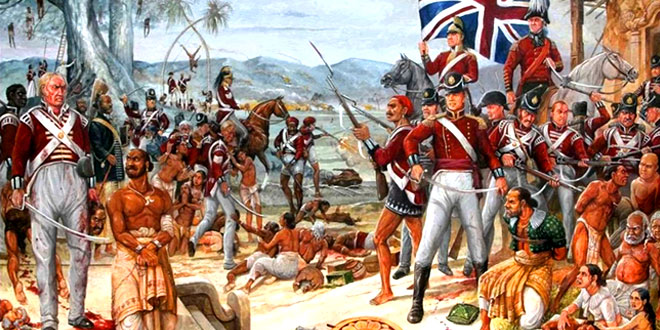Question: Why did the network of export trade in textiles controlled by the Indian merchants break down by the 1750s? Mention any two effects of such a breakdown?
Answer:
- European trading companies gained power. First, they acquired trading concessions from local rulers, then monopolized rights to trade.
- This resulted in the decline of the old ports of Surat and Hoogly.
- Exports from the old ports fell dramatically and local bankers slowly went bankrupt.
- Impacts:
(i) Weavers devoted entire time to weaving. They were forced to accept the prices fixed by the company.
(ii) There were reports of dashes between weavers and Gomasthas. The new Gomasthas were outsiders. They acted arrogantly, marched into villages with sepoys and peons, and punished weavers for delays in supply. The weavers lost the space to bargain for prices and sell to different buyers.
(iii) Weavers deserted villages and migrated, setting up looms in other villages where they had some family relations.
Question: Why were most of the producers reluctant to use the new technology? Explain by giving examples.
Or
Why did industrialists not want to get rid of hand labour once machines were introduced?
Or
“The modem industrialization could not marginalize the traditional industries in England”. Justify the statement with any four suitable arguments.
Or
Why did the industrialists of Europe prefer hand labour over machines during the 19’1, century? Explain any five reasons.
Answer:
- Expensive new technology: New technologies and machines were expensive, so the producers and the industrialists were cautious about using them.
- Costlier repair: The machines often broke down and the repair was costly.
- Less effective: They were not as effective as their inventors and manufacturers claimed.
- Availability of cheap workers: Poor peasants and migrants moved to cities in large numbers in search of jobs. So the supply of workers was more than the demand. Therefore, workers were available at low wages.
- Uniform machine-made goods: A range of products could be produced only with hand labour. Machines were oriented to producing uniforms, standardized goods for a mass market. But the demand in the market was often for goods with intricate designs and specific shapes.
- In the mid-nineteenth century: Britain, for instance. 500 varieties of hammers were produced, and 15 kinds of axes. These required human skill, not mechanical technology.
Question: Explain the major features of the industrialization process of Europe in the 19th century.
Answer:
- Major Industries: Cotton and metal industries were the most dynamic industries in Britain. Cotton was the leading sector i.e. the first phase of industrialization up to the l840s. but the iron and steel industry led the way after 1840. With the expansion of railways in England from the l840s and in the colonies from the l860s. the demand tor iron and steel increased rapidly. By 1873 – Britain was exporting iron and steel worth about 577 million, double the value of its cotton export.
- Domination of traditional industry: The modem machinery and industries could not easily displace traditional industries. Even at the end of the nineteenth century, less than 20 per cent of the total workforce was employed in technologically advanced industrial sectors. Textile was a dynamic sector, but a large portion of the output was produced not within factories, but outside, within the domestic units.
- Base for growth: The pace of change in the “traditional” industries was not set by steam powered cotton or metal industries. They were the ordinary and small innovations which built up the basis of growth in many non-mechanized sectors such as food processing, building, pottery, glass work, tanning, furniture making and production of implementing sectors.
- New inventions: A series of inventions the eighteenth century increased the efficacy, of each step of the production process (carding, musing and spinning end rolling). They enhanced the output pet worker, enabling each worker to produce more, and they made possible the production of stronger threads and yam. Then Richard Arkwright created the cotton mill.
- Slow pace: Though technological inventions were stung place but their pace was very slow. They did not spread dramatically across the industrial landscape New technologies and machines were expensive, so the producers and the industrialists were cautious about using them The machines often broke down, and the repair was costly. They were not as effective as their inventors and manufacturers claimed.
 Class Notes NCERT Solutions for CBSE Students
Class Notes NCERT Solutions for CBSE Students





